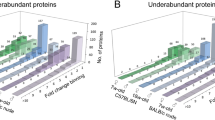Abstract
Nuclear reactions are a very important natural phenomenon in the universe. On the earth, cosmic rays constantly cause nuclear reactions. High energy beams created by medical devices also induce nuclear reactions in the human body. The biological role of these nuclear reactions is unknown. Here we show that the in vivo biological systems are exquisite and sophisticated by nature in influence on nuclear reactions and in resistance to radical damage in the body of live animals. In this study, photonuclear reactions in the body of live or dead animals were induced with 50-MeV irradiation. Tissue nuclear reactions were detected by positron emission tomography (PET) imaging of the induced beta+ activity. We found the unique tissue "fingerprints" of beta+ (the tremendous difference in beta+ activities and tissue distribution patterns among the individuals) are imprinted in all live animals. Within any individual, the tissue "fingerprints" of 15O and 11C are also very different. When the animal dies, the tissue "fingerprints" are lost. The biochemical, rather than physical, mechanisms could play a critical role in the phenomenon of tissue "fingerprints". Radiolytic radical attack caused millions-fold increases in 15O and 11C activities via different biochemical mechanisms, i.e. radical-mediated hydroxylation and peroxidation respectively, and more importantly the bio-molecular functions (such as the chemical reactivity and the solvent accessibility to radicals). In practice biologically for example, radical attack can therefore be imaged in vivo in live animals and humans using PET for life science research, disease prevention, and personalized radiation therapy based on an individual's bio-molecular response to ionizing radiation.
Similar content being viewed by others
Article PDF
Author information
Authors and Affiliations
Corresponding author
Rights and permissions
About this article
Cite this article
Xie, Wh., Liu, Cy., Cai, Xj. et al. Life fingerprints of nuclear reactions in the body of animals. Nat Prec (2010). https://doi.org/10.1038/npre.2010.4897.1
Received:
Accepted:
Published:
DOI: https://doi.org/10.1038/npre.2010.4897.1



